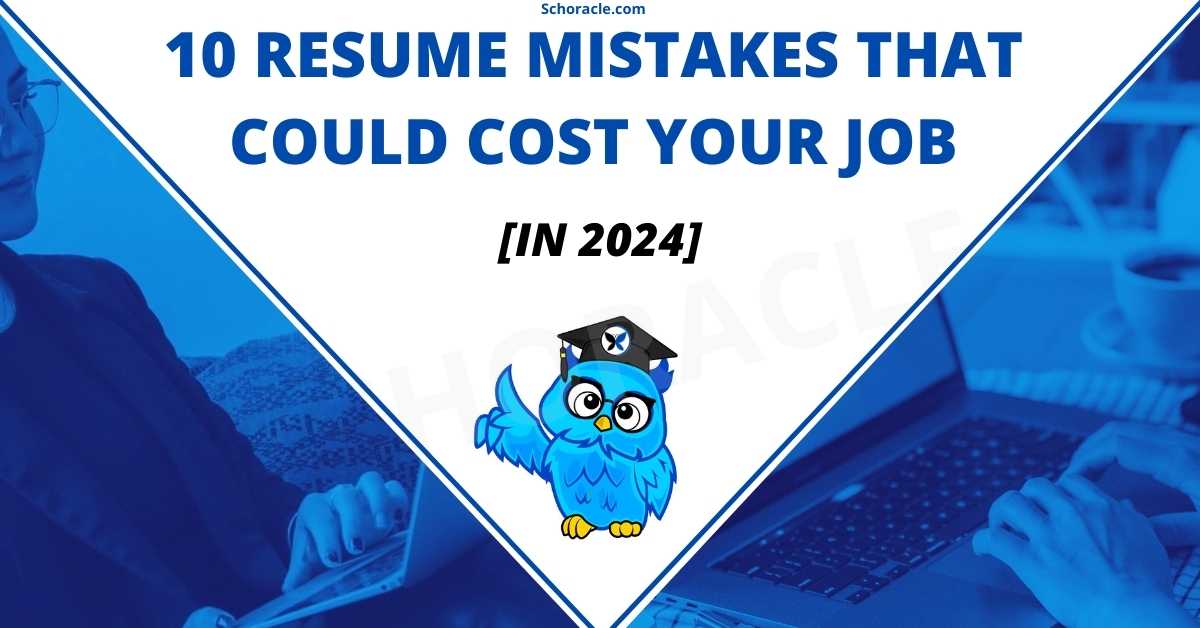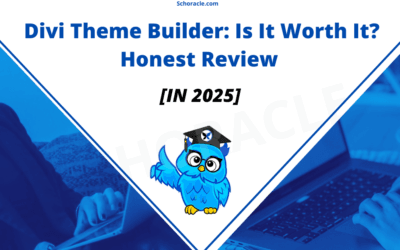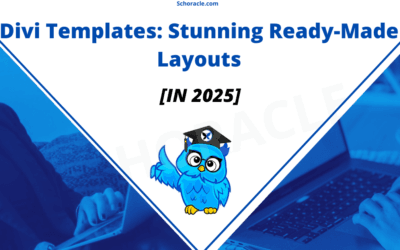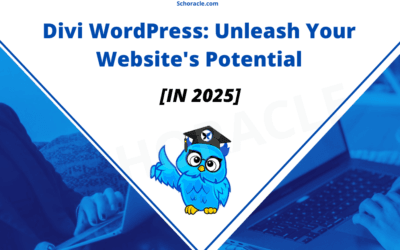Resume mistakes can cost you big in today’s tough job market. Even small errors on your resume might mean you lose out on job chances.
Your resume is often the first thing employers see about you. It’s like a personal ad for your skills, meant to get you an interview and help you land your dream job.
Lets look at the top 10 resume mistakes that people make. We’ll explain each one clearly and give you easy tips to fix them. By the end, you’ll know how to make your resume stand out in a good way.
Are you ready to make your resume better? Let’s get started!
1. The “One-Size-Fits-All” Approach

Ah, the temptation of the universal resume. It’s so easy, isn’t it? Just whip up one document and send it out to every job opening you find.
But hold on there! This approach is a surefire way to land your resume in the “thanks, but no thanks” pile.
Here’s why this is a big no-no:
Lack of Personalization: Each job is unique, and employers want to see that you’ve taken the time to understand their specific needs. A generic resume simply doesn’t cut it.
Missed Opportunities: By not tailoring your resume, you’re missing out on showcasing how your skills and experiences align perfectly with the job requirements.
It Screams “Lazy”: Sending the same resume to every job can give the impression that you’re not truly invested in the position.
Instead, consider this approach:
Read the Job Description Carefully: Highlight the key skills and experiences they’re looking for.
Customize Your Summary: Tailor your professional summary or objective to align with the specific role.
Reorder Your Skills and Experiences: Put the most relevant information for each job at the top.
Use Industry-Specific Language: Incorporate keywords from the job description (but don’t overdo it).
Remember, a little effort goes a long way. Your future employer will appreciate the time you’ve taken to show why you’re the perfect fit for their specific role.
2. The Typo Terror
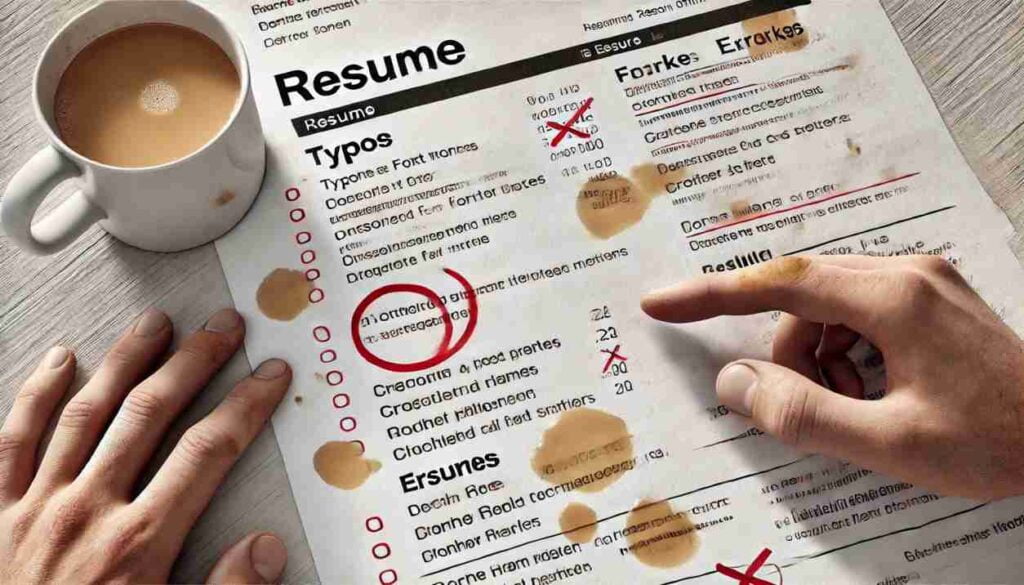
We’ve all been there – you’ve spent hours crafting the perfect resume, only to realize after sending it that there’s a glaring typo staring back at you.
It’s a heart-sinking moment, and unfortunately, it could cost you the job.
Here’s why typos and grammatical errors are such a big deal:
First Impressions Matter: Your resume is often the first thing an employer sees. Errors can make you appear careless or unprofessional.
Attention to Detail: Many jobs require precision and accuracy. Typos suggest you might lack these crucial skills.
Communication Skills: Your resume is a reflection of your written communication abilities. Errors can cast doubt on these skills.
Let’s banish these pesky errors with these strategies:
Take a Break: After writing your resume, step away from it for a while. Fresh eyes are more likely to catch mistakes.
Read it Out Loud: This technique can help you catch awkward phrasing and missing words.
Use Spell Check, But Don’t Rely on It: Spell check won’t catch everything (like using “their” instead of “there”).
Check for Consistency: Ensure your formatting, tenses, and punctuation are consistent throughout.
Remember, even the smallest error can be a big red flag for employers. Take the time to proofread thoroughly – your future self will thank you!
3. The Oversharer’s Dilemma

In the world of resumes, sometimes less really is more. While it’s tempting to include every detail of your professional life, oversharing can actually hurt your chances of landing an interview.
Let’s dive into why too much information can be a bad thing:
Information Overload: Recruiters often spend just seconds scanning a resume. Too much information can make it hard for them to find what’s relevant.
Lack of Focus: Including irrelevant details can dilute the impact of your most impressive achievements.
Privacy Issues: Sharing personal information like marital status or personal documents can be a security risk.
Keep your resume focused and effective with these tips:
Stick to Relevant Information: Only include experiences and skills that directly relate to the job you’re applying for.
Use the Last 10-15 Years as a Guide: Unless you’re in a field that values long-term experience, focus on your most recent and relevant roles.
Quantify Your Achievements: Instead of long descriptions, use numbers and percentages to showcase your impact.
Be Selective with Your Skills: Highlight the skills most relevant to the job, rather than listing every software you’ve ever used.
Remember, your resume is a highlight reel, not your life story. Keep it concise, relevant, and impactful, and you’ll have a much better chance of catching the recruiter’s eye.
4. The Formatting Blunders

Now, let’s talk about something that might seem trivial but can make or break your resume – formatting. In the world of resumes, looks matter. Poor formatting can make your resume difficult to read, confusing, or just plain unprofessional.
So, what formatting mistakes should you avoid? Let’s take a look:
Inconsistent Fonts: Mixing too many fonts can make your resume look chaotic. Stick to one or two professional fonts.
Tiny Text: Don’t shrink your font to fit more on the page. If your resume is hard to read, it probably won’t get read at all.
Dense Paragraphs: Large blocks of text are intimidating. Break information into bullet points for easy scanning.
Unusual File Formats: Stick to widely compatible formats like .doc, .docx, or .pdf unless otherwise specified.
Instead, here’s what you should aim for:
Readability: A well-formatted resume is easy on the eyes and simple to scan quickly.
Professionalism: Clean, consistent formatting shows attention to detail and organizational skills.
ATS Compatibility: Many companies use Applicant Tracking Systems (ATS) that can get tripped up by complex formatting.
White Space: Don’t be afraid of white space. It makes your resume easier to read.
Clear Section Headers: Make it easy for recruiters to find the information they’re looking for.
Consistent Formatting: Use the same font, size, and style for all section headers. Keep bullet points consistent.
Appropriate Length: In most cases, aim for a one-page resume. If you have extensive relevant experience, two pages may be acceptable.
Remember, the goal is to make your resume as easy to read and understand as possible. A clean, professional format will help your qualifications shine through.
5. The Objective Objection

Let’s unpack why the traditional objective statement is often a mistake and what you should do instead.
Why the objective statement is problematic:
It’s Outdated: Many hiring managers see objectives as an old-fashioned resume element.
It’s Self-Centered: Objectives focus on what you want, not what you can offer the company.
Wastes Prime Real Estate: The top of your resume is valuable space that could be better used.
Often Generic: Many objective statements are vague and could apply to any job seeker.
Lets introduce the star of the show: the professional summary or profile.
Focused on Value: A good summary highlights what you can bring to the role and company.
It’s Customizable: You can easily tailor it to each job application.
Provides a Snapshot: A well-crafted summary gives a quick overview of your key qualifications.
Here’s how to craft a compelling professional summary:
1. Aim for 3-5 strong sentences.
2. What sets you apart from other candidates?
3. Tailor these to the job description.
4. Words like “achieved,” “improved,” or “led” pack a punch.
5. Numbers and percentages can make your summary more impactful.
Bonus Tip!
Instead of Writing:
“Objective: To obtain a challenging position as a marketing manager where I can utilize my skills and experience.”
Include data:
“Proven track record of increasing web traffic by 150% and improving conversion rates by 25% through innovative SEO and content strategies.”
6. The Qualification Situation

Now, let’s talk about a mistake that many job seekers make without even realizing it: mismatching qualifications.
This happens when your resume doesn’t align with the job requirements, either by overselling or underselling your skills and experiences.
Why is this a problem? Well, here’s the deal:
Overselling: Exaggerating your qualifications might get you an interview, but it’ll quickly become apparent if you can’t back up your claims.
Underselling: If you don’t highlight relevant skills and experiences, you might miss out on opportunities you’re actually qualified for.
Irrelevant Information: Including qualifications that don’t relate to the job can distract from your relevant skills.
Tack this issue with the following:
1. Read the Job Description Carefully: Highlight the key skills and qualifications they’re looking for.
2. Match Your Skills to the Job: For each requirement, think of a specific example of how you’ve demonstrated that skill.
3. Use the Right Keywords: Many companies use ATS to screen resumes. Including relevant keywords can help your resume make it through.
4. Be Honest: Don’t claim skills you don’t have. Instead, focus on your strengths and how they apply to the role.
5. Show Potential: If you’re missing some qualifications, highlight transferable skills and your capacity to learn quickly.
6. Include Certifications: If you’ve taken courses or earned certifications related to the job, make sure to include them.
7. Use the CAR Method: For each key qualification, try to provide a Challenge you faced, the Action you took, and the Result you achieved.
By aligning your qualifications with the job requirements, you’re not just throwing your hat in the ring – you’re showing the hiring manager that you’re a perfect fit for the role.
7. The Responsibility Trap

Now, let’s tackle a sneaky mistake that many job seekers fall into: the responsibility trap.
This happens when your resume reads like a job description, listing what you were responsible for rather than what you actually achieved.
It’s like telling someone you know how to bake a cake instead of showing them the delicious cake you made!
Why is this a problem? Well, here’s the scoop:
It’s Boring: A list of responsibilities doesn’t engage the reader or make you stand out.
Too Many Assumptions: Hiring managers often already know the typical responsibilities of a role.
Nil Impact: Responsibilities don’t demonstrate how well you performed or what value you added.
It Misses Opportunities: By focusing on responsibilities, you miss the chance to showcase your unique contributions and achievements.
So, how do we escape this responsibility trap? Let’s see:
1. Focus on Achievements: Instead of listing what you were supposed to do, highlight what you actually accomplished.
2. Use the PAR Method: For each bullet point, describe a Problem you faced, the Action you took, and the Result you achieved.
3. Highlight Innovations: Did you implement a new process or come up with a creative solution? Make sure to mention it!
4. Show Growth: Demonstrate how you excelled in your role or took on additional responsibilities over time.
8. The Chronological Chaos

Let’s chat about a common resume mistake that can leave hiring managers scratching their heads: chronological chaos.
This happens when your work history is presented in a confusing or illogical order.
Why is ignoring chronological order a problem?
It’s Confusing: A jumbled timeline makes it hard for the reader to follow your career path, leaving them scratching their heads.
Hides Progress: Without a clear chronology, your career growth gets lost in the shuffle, making it seem like you’ve been treading water.
Buries Recent Wins: Your latest accomplishments might get overshadowed by older roles, potentially costing you that dream job.
Raises Red Flags: A non-chronological resume can make hiring managers suspicious, wondering if you’re trying to cover up employment gaps or frequent job changes.
Lets bring order to the chronological chaos with these strategies:
1. Reverse Chronological Order: Start with your most recent job and work backwards. This is the standard and most preferred format.
2. Consistent Date Formatting: Choose a format (month/year or just year) and stick with it throughout.
3. Include Employment Dates: For each role, clearly state when you started and when you left.
4. Address Gaps Honestly: If you have significant gaps in employment, consider addressing them briefly in your cover letter.
5. Use Years for Older Roles: For positions from more than 10-15 years ago, you can just list the years to save space.
6. Separate Sections: Keep your work history separate from other sections like education or volunteer work to maintain clarity.
9. The References Riddle

Avoid the classic resume mistake of including “References available upon request” or listing references directly. This wastes valuable space on your resume that could be better used to showcase your skills and achievements.
Why including references is a potential misstep? Let’s break it down:
It’s Premature: References are typically checked at the end of the hiring process, not at the resume screening stage.
Wastes Precious Space: Your resume has limited space, and every inch should be used to sell your skills and experiences.
Assumptious: Employers expect that you’ll be able to provide references if asked.
Privacy Concerns: Listing your references’ contact information on a document that might be widely distributed isn’t ideal.
Instead, these tips let you demonstrate references better:
1. Remove “References Available Upon Request”: This phrase is outdated and unnecessary. It’s assumed you’ll provide references when asked.
2. Use the Space Wisely: Instead of a references section, use that space to expand on your skills or achievements.
3. Prepare a Separate Reference List: Have a document ready with your references’ names, titles, contact information, and your relationship to them.
4. Inform Your References: Always give your references a heads-up when you’re job hunting.
5. Choose Wisely: Select references who can speak to your skills and qualities relevant to the job you’re applying for.
6. Update Regularly: Ensure your reference list is current. Nothing’s worse than providing outdated contact information.
10. The “Kitchen Sink” Syndrome

Last but certainly not least, let’s talk about the “Kitchen Sink” syndrome. This happens when you try to cram every single job, skill, and accomplishment you’ve ever had onto your resume.
It’s like trying to fit your entire life story onto a postage stamp!
Why this can be seen as a huge problem?
Information Overload: Recruiters often spend just seconds scanning a resume. Too much information can be overwhelming.
Dilutes Important Information: When everything is highlighted, nothing stands out.
Lack of Focus: Including irrelevant information can distract from your key qualifications for the specific job.
Length Issues: Overly long resumes may be disregarded or only partially read.
Here’s how we avoid throwing everything into our resume:
1. Tailor Your Resume: Customize your resume for each job application, focusing on the most relevant experiences and skills.
2. Job Description as a Guide: Highlight the skills and experiences that directly relate to the job requirements.
3. Recent and Relevant Experience: In most cases, you don’t need to include jobs from more than 10-15 years ago unless they’re particularly relevant.
4. Be Selective with Skills: Instead of listing every software you’ve ever used, focus on the ones most relevant to the job.
5. Use Bullet Points Wisely: Limit yourself to 3-5 bullet points per job, highlighting your most impressive achievements.
6. Leave Out the Obvious: There’s no need to list basic skills that are expected in your field (like knowing how to use email for an office job).
7. Keep it to 1-2 Pages: Unless you’re in a field that requires a CV, try to keep your resume concise.
Your resume is a highlight reel, not a documentary. It should showcase your best and most relevant experiences, skills, and achievements.
By being selective and strategic about what you include, you’re making it easier for recruiters to see why you’re the perfect fit for the job.
Concluding Thoughts
And there you have it! We’ve journeyed through the top 10 resume mistakes that could be costing you your dream job. From the perils of typos to the pitfalls of oversharing, we’ve covered a lot of ground.
But here’s the exciting part: armed with this knowledge, you’re now equipped to transform your resume from a potential problem into a powerful career catalyst.
The job market can be tough, but with a well-crafted resume, you’re already ahead of the game.
So go ahead, take another look at your resume with fresh eyes. Make those tweaks, highlight those achievements, and get ready to impress those hiring managers.
Affiliate Disclosure: To ensure we run Schoracle ad-free, this blog contains affiliate links. We may earn a small commission for purchases that you make. Read our Affiliate Disclaimer for more details.




